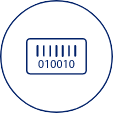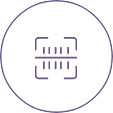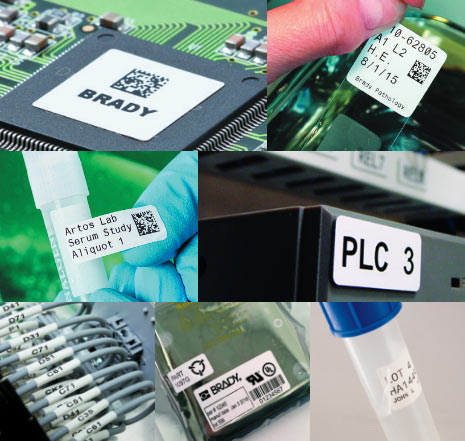Labels for Safety, Visuals and Facility ID Desktop Printers
Labels for Product, Wire and Lab ID Benchtop Printers
Labels for Safety, Visuals and Facility ID Desktop Printers
Labels for Product, Wire and Lab ID Benchtop Printers
Safety and Facility ID Desktop Printers
Product, Wire and Lab ID Benchtop Printers
Barcode Scanners and RFID Readers
PaintStripe Floor Marking Stencils
Valve Lockouts & Hose Lockouts
Group Lock Boxes & Permit Control
Pipe Marker Accessories & Mounting Brackets
Maintenance and Production Tags
Calculators and Assessment Tools
Product Finders and Data Sheets
From consumer products and food packaging to pipe fittings and hazardous material containers, just about everything has some sort of label affixed to it that contains important information that buyers, sellers or manufacturers need to be aware of. Most of us are familiar with barcodes and QR codes, but the technology that goes into them may come as a surprise.
It’s essential to understand the differences between barcode labels (affixed to a surface) and tags (attached to an asset) and the devices that “read” them because how they will be used—the what, why, when and where—make a big difference. Both barcode and RFID readers are used in integrated intelligent manufacturing solutions. Barcodes often serve to identify the location of production orders, input inventory quantities of raw materials, and help signal the completion of finished goods. RFID can perform similar functions, but eliminates the human element, improving accuracy and automating the scan.
Before we get started, it’s important to note that we are talking about asset tracking, not inventory tracking. They are not the same thing. Asset tracking is the ability to locate an asset (where it is or where it most recently was) and use that information to perform a function or provide a notification. Inventory tracking is the monitoring of the volume of many of the same items, like the number of XL white T-shirts in stock.
Need a specialist to help you decide which system will best meet your needs? We can help you find the right solution. Contact Us
There are many uses for asset tracking. We won’t go into detail on all of them, but here are a few that can get you started thinking about how you can use barcode readers and/or RFID (short for radio frequency identification) scanners in your business:
RFID reader and optical barcode scanner technologies can both help a company improve productivity, performance, compliance, safety and security through asset tracking. Here are some of the basic differences between the two technologies.


Labels vs. tags
Labels are used for one-to-one tracking—you physically scan one label, and you know you’ve only scanned one label. With RFID tags, you’re able to scan many items in seconds (a whole pallet in 30 seconds or so in many cases). In short, barcode is best when you want one-to-one accuracy, and RFID is better for inventory applications.
Optical barcode scanner and RFID reader technologies can both help a company improve productivity, performance, compliance, safety and security through asset tracking, but there are distinct differences that require consideration before choosing one or the other. Among the considerations:
There are hundreds of different types of labels and tags that can be used with barcode readers and RFID scanners, each with its own advantages and limitations. Choosing the right one for the application at hand depends on several factors, including:

As an example, here are three very different use cases that would require completely different approaches to each factor identified above:
| Edible Produce | Circuit Board | Caustic Material | |
| Material | Food | Epoxy Resin | Non-corrosive barrel |
| Shape | Uneven | Flat | Curved |
| Environment | Temperature-controlled | Heat-producing, solvents | Outdoors |
| Handling | Picked up individually | During manufacturing/repair | Cautiously moved/stored |
| Compliance | None | MIL-STD-202G | Hazmat |
| Information | Type, price, lot | Model number, manufacturer | Safe handling, compliance info |
| Printing | Handheld portable printer | Industrial THT label printer | Industrial THT label printer or Industrial InkJet for barrell labels |
| Label/tag characteristics | Food-grade adhesive, easy to remove, flexible | Abrasion-Resistant, Chemical-Resistant, Corrosion-Resistant, Humidity Resistant, UV-Resistant | Harsh environment, OSHA regulations, permanent |

There are also many different kinds of optical barcode scanners and RFID readers, most of which fall into the categories of handheld or fixed (like those that you find in retail self-checkout kiosks). Optical barcode scanners use a beam of light to “read” the barcode printed on a label or tag. RFID readers pull data from RFID chips embedded in them via radio waves. Obviously, which type you choose depends on whether you’re using barcode or RFID technology, but there are other considerations as well, including:
| Grocery Store Checkout | Storage Warehouse | Manufacturing Line | |
| Read Range | Centimeters | Feet | Varies |
| Read speed | One at a time, fairly slow | Slow | Fast |
| Location density | Single | Tightly packed, lots and singles | Close |
| Label/tag location | Affixed exterior | Varies | Varies |
| Asset orientation | Turned to face reader/scanner | Stored to face reader/scanner | Varies |
| Barcode Type | 1D | 1D and 2D | 1D, 2D, DPM |
| Possible solution | Low Cost Optics packages integrated into check-out kiosks. Rolling shutter. | Mobile handheld scanner. Either dedicated device tethered to mobile computer, or mobile device (e.g. phone / tablet). Rolling Shutter. | Industrial ruggedized handheld and fixed readers. Rolling and Global Shutter for high-speed applications. |
The barcode reader or RFID scanner sends information back to a database, and from there the choice of software dictates what happens. It varies by application. For instance, the software may send a message if an asset is in an area it’s not supposed to be in, automatically update the location within the database, then prompt a user to take an action. At the other end of the spectrum, software can dictate how your data is reported so you can use it to make relevant business decisions.

Find out more about what goes into choosing the right asset tracking system: the consultative process, the pre-implementation phase and training best practices.
The barcode reader or RFID scanner sends information back to a database, and from there the choice of software dictates what happens. It varies by application. For instance, the software may send a message if an asset is in an area it’s not supposed to be in, automatically update the location within the database, then prompt a user to take an action. At the other end of the spectrum, software can dictate how your data is reported so you can use it to make relevant business decisions.